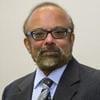Explore all the information on
Energy in poultry diets
While protein, vitamins and minerals are referred to as nutrients, energy -the 4th and most costly part of the diet- is not a nutrient but the property of energy yielding nutrients. Dietary nutrients that yield energy are protein, fat and carbohydrates. Dietary energy level is the main factor influencing feed intake, as birds will, under normal circumstances, eat to satisfy their energy needs. Therefore the dietary nutrients, protein vitamins and minerals should vary in relation to the dietary energy content of the diet, if they are not to become deficient, with low feed intakes, or overconsumed, with low energy diets. While there are a number of factors, such as level of protein, balance of essential amino acids and perhaps level of some of the other dietary nutrients, that can influence the cost of a diet, the level of dietary energy is usually the main factor influencing diet cost.
I. INTRODUCTION Modern broilers grow quickly because they have tremendous genetic potential due to intensive selection for increased growth rate and efficiency (Zuidhof et al., 2014). The parents, broiler breeders, carry this genetic potential and when fed ad libitum, easily become overweight (Heck et al., 2004), compromising reproductive performance (Renema and Robinson, 2004; Chen et al., 2006) and reducing welfare (Mench, 2002). Thus, broiler breeder hens are typically feed...
Comments : 0
Recommendations: 0
I. INTRODUCTION Mannan is a plant based-NSP derived from polymerisation of mannose sugars, it is categorised as galactomannan or glucomannan based on the presence of galactose and glucose side chains (Aspinall, 1973). Generally, galactomannan is the dominant form in legumes (Sundu et al., 2012). The ratio between mannose to galactose dictates the water solubility of galactomannan where galactose has a strong capacity to bind water and increase gut viscosity. The β-mannan in...
Comments : 0
Recommendations: 0


Developing effective natural solutions for animals - Liptosa: 2020 Summary and 2021 Challenges
Suggested link
I. INTRODUCTION Cereal grains such as wheat, sorghum, barley and maize are commonly used in poultry diets as the main source of energy. Knowledge on the metabolisable energy content of cereal grains is critical for their efficient use and precise poultry feed formulation. Despite several limitations (Mateos et al., 2019; Wu et al., 2020), the AME has been the globally accepted system for describing the dietary energy content for poultry. Modern, commercial broiler...
Comments : 2
Recommendations: 0
I.INTRODUCTION A high degree of volatility with regard to the pricing and supply of inputs has arisen. This situation began with the COVID-19 pandemic and the negative effect it had on the global supply chain, and has been exacerbated by the Russian-Ukrainian war. This state of affairs will likely persist until at least the end of 2023 (Mulder, 2022). It has given rise to the intermittent non-availability of several essential feed ingredients. Coupled with these short- to medium-term...
Comments : 0
Recommendations: 0
I. Introduction Grains are the major energy sources in broiler diets. However, they also supply about 40% of the total dietary protein and contribute significantly to the provision of some indispensable amino acids (IAA; Szczurek et al., 2020). Despite the low protein content in maize, owing to its higher inclusion levels (50-70%) it may contribute approximately up to one third of the protein requirement of broilers. The inclusion of barley in poultry diets remains limited because of...
Comments : 0
Recommendations: 1
Kostas Mountzouris (Agricultural University of Athens) A deeper understanding of critical bird homeostasis responses may augment poultry industry efforts for improved bird resilience and production sustainability. The aim of this work was to explore the expression range of critical genes in the broiler gut as responses to diverse dietary inputs. The gene transcripts studied were grouped based on their functional role under functional indices, termed...
Comments : 0
Recommendations: 1
Kostas Mountzouris (Agricultural University of Athens) shares his research on modeling responses through molecular analytical data, linked to animal homeostasis, during the 11th Symposium on Gut Health in Production of Food Animals in St. Louis, USA....
Comments : 0
Recommendations: 2
Kostas Mountzouris (Agricultural University of Athens) offers insights on gut homeostasis modulation through metabolizable energy, crude protein and phytogenics, during the 11th Symposium on Gut Health in Production of Food Animals in St. Louis, USA....
Comments : 0
Recommendations: 3
INTRODUCTION Corn and soybean meal are ingredients that have a good digestibility, however depending on the storage, crop and variety, these ingredients may have a change in their nutritional quality. For broilers, these ingredients constitute around 70 and 30% of the diet, respectively. Thus, any small improvement in their quality significantly influences the performance of the broiler chickens and the meat production cost. The carbohydrate fraction of cereal ingredients has...
Comments : 2
Recommendations: 1
INTRODUCTION Providing adequate quantities of animal protein to meet the demands of a continuously growing population requires that livestock producers must increase the production efficiency of farm animals. This can be achieved through improved genetics, management, and nutrition. Furthermore, feed ingredient prices continue to increase, resulting in minimizing the profit for the producers and forcing them to seek cheaper alternative ingredients, typically of lower quality and...
Comments : 1
Recommendations: 1
An experiment was conducted to assess the potential for guanidinoacetic acid (GAA) to spare dietary energy and influence muscle myopathies when included in broiler diets. A total of 1,056 male Ross 708 broiler chicks were randomly assigned to 48 floor pens with 22 chicks per pen. Broilers were fed one of four experimental diets and reared to 50 days of age. Dietary treatments consisted of a control (T1), T2 (T1 – 110 kcal/kg apparent MEn), T3 (T2 + 0.08% GAA), and T4 (T1 – 55...
Comments : 0
Recommendations: 0
Craig Coon (University of Arkansas) shares his knowledge regarding this subject, focusing on energy, proteins and amino acids, as well as the advances made in the industry throughout the years, in this interview during IPPE 2023 in Atlanta, USA....
Comments : 6
Recommendations: 5
1 | INTRODUCTION Due to the impact of climatic changes and other global events such as conflict, the Covid‐19 pandemic, recession, and supply chain issues, conventional feed ingredient prices are continually increasing. The effect of these constraints is felt largely in developing countries that are coming under huge pressure to source raw materials such as corn and soybean meal (Abro et al., 2020). The search for alternative feed ingredients to sustain the livestock...
Comments : 0
Recommendations: 1
1. Introduction The best strategy to optimize production and reproduction in poultry species while mitigating the harmful effects of environmental conditions is proper nutrition 1,2,3 . One of the pillars of nutrition is the use of amino acids in poultry diets, among which Methionine (Met) represents the first limiting amino acid in broilers. As Bunchasak 4 reported, Met can act as an amino acid in the synthesis of protein and polyamine, a sulfur donor, a...
Comments : 1
Recommendations: 0
I. Introduction Guanidino acetic acid (GAA) is a naturally occurring metabolite which is synthesized in the kidney by L-arginine-glycine amidinotransferase (AGAT) using glycine and arginine (Arg) as substrate (Brosnan et al. 2009). Then, GAA is methylated to creatine in the liver using GAA N-methyltransferase (GAMT). Feeding GAA to humans and animals increases creatine in blood and muscle tissues (Ostoic et al. 2013; DeGroot et al. 2018). High creatine in blood has an inhibitory...
Comments : 0
Recommendations: 0
INTRODUCTION It is imperative to identify factors that inhibit the digestibility of nutrients for successful commercial poultry production. The non-starch polysaccharides (NSP) like substances of hemicellulose, cellulose, and pectin can reduce nutrient digestibility in poultry (Choct, 1999). Among the NSP, β-mannans are a group of hemicelluloses, which are present in many ingredients used for poultry feeds like soybean and other leguminous seeds. It occurs in the forms of...
Comments : 1
Recommendations: 1
The IGP Institute is conducting a market intelligence survey to collect information on the current usage, processing, and purchasing of grain sorghum in animal nutrition from different places around the world. The objective is to get data that can help us identify the technical areas where there...
Comments : 0
Recommendations: 0
1. Introduction As feed grade amino acids are commercialized at prices that are economically feasible for including in industry poultry diets, nutritionists are able to better supply diets containing amino acid profiles more closely representing ideal amino acid profiles (Baker, 1997). Refinement of dietary amino acid profiles allows for reductions in crude protein (CP), inclusion levels of protein-rich ingredients in the diet and nitrogen excretion in broiler chickens (Kidd et...
Comments : 0
Recommendations: 1


Developing effective natural solutions for animals - Liptosa: 2020 Summary and 2021 Challenges
Suggested link
INTRODUCTION Conventional broiler production is dependent on maize as a source of energy and soybean meal as a source of protein. Nutrient digestibility of plant-based feeds in poultry is limited by the proportion of their components for which there are no corresponding endogenous enzyme secretions. These components include non-starch polysaccharides (NSPs) that are present within the cell walls of maize and soybean meal 1,2 . The NSPs are either indigestible or of very...
Comments : 0
Recommendations: 0










.jpg&w=3840&q=75)
.jpg&w=3840&q=75)












.jpg&w=3840&q=75)












